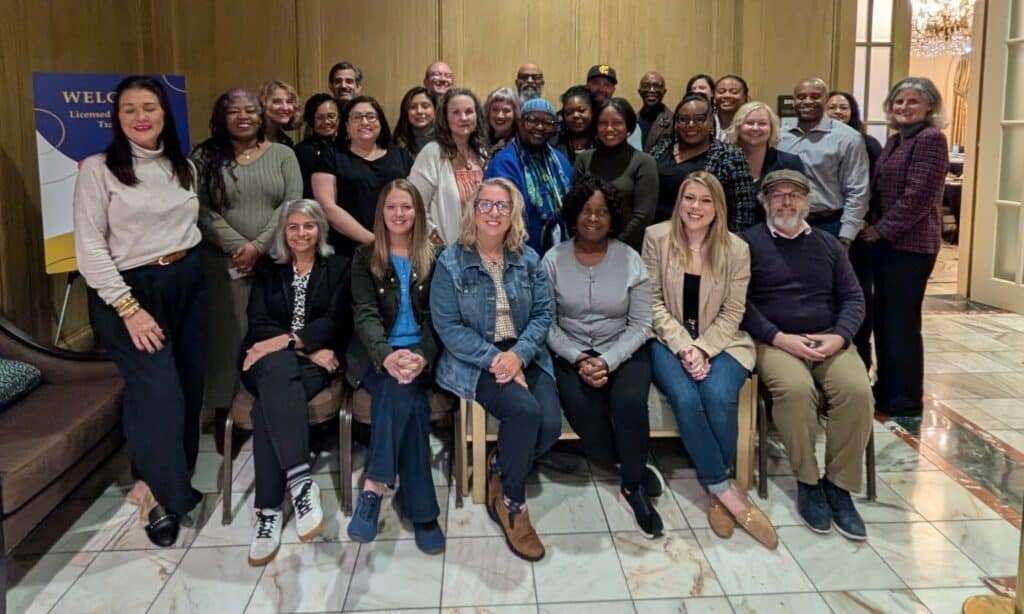

The following post was written by Standards for Excellence Licensed Consultant Carmen C. Marshall and is part of our “Ten Years of Advancing Excellence” blog series, celebrating ten years of the Standards for Excellence Licensed Consultant program. Carmen specializes in performance improvement, ideation and execution, communications, marketing, organizational development, training and executive coaching. As a management consultant, Carmen has helped numerous leaders, executives, and organizations grow and improve impacting their bottom line, raise additional funds and create new programs that move the organization’s vision forward. Carmen C. Marshall became a Standards for Excellence Licensed Consultant in 2013.
Applications for the 2016 Licensed Consultant Training program will be accepted through July 1.
There’s good news and challenging news. The good news is that philanthropic giving to nonprofits is up. According to the Urban Institute Center on Nonprofits and Philanthropy, “in 2014, total private giving from individuals, foundations, and businesses totaled $358.38 billion, an increase of just over 5 percent from 2013 after adjusting for inflation. According to Giving USA (2015), total charitable giving rose for the fifth consecutive year in 2014. After adjusting for inflation, this is the first year to exceed the previous peak set before the recession in 2007 ($355.16 billion in 2014 dollars)”. – The Nonprofit Sector in Brief 2015 Public Charities, Giving, and Volunteering
The challenging news is that in 2015, the nonprofit donor retention rate average was 46% according to the 2016 Fundraising Effectiveness Survey Report.* In dollar to dollar terms, that means, over 54 percent of donors don’t return to give in the next year. This is not about simply counting the number of donors, however, but it is about being intentional around donor retention and investment of fund development resources.
What’s more valuable to your organization A) a fundraising event that generates a profit? B) a large one-time donation? or C) a committed donor who gives annually?
While a case can certainly be made for A and B, research indicates that there is no substitute for a committed nonprofit donor who believes in your organization. That donor is most likely to give year after year. Whether you’re the fund development officer or the accidental fundraiser in your organization, let’s face it, getting and keeping donors is preeminent and key to sustainability. Generating revenue to move your organization’s mission forward is paramount and inextricably tied to donor retention. There are four keys that will transform your fund development. These four keys are founded on the premise that it’s not all about you. Put these principles to work and they will not only transform your fund development, but will help you to retain donors. The Big 4 Keys to Transformation: Communicate, Cultivate, Educate and Evaluate.
Communicate
-
Results and Impact – Nonprofit donors want to know that their money is at work doing what you promised them. They want to know that their investment is making an impact. Your value to the donor is not only what a great charity you are, but how valuable their contribution is and what a difference it is making in the world. They need to believe in who you are and what you do. Show evidence. Your story must stand out. Communicate results and impact through your organization’s newsletters, e-news, on your website, in eblasts, Facebook posts, Twitter, Instagram, thank you letters and personal notes and occasional phone calls. One of my clients, made it a point to call selected donors and visit others in their region to hand-deliver a photo album of kids and their personal thank you notes as a way of saying thank you. That donor was so touched that she continued to give and increased her giving over the years. If there are really big news items, do an official public relations campaign, to get it on national and local news outlets.
-
Arrange for donors to meet the recipients. Create small and private donor receptions, with a personal touch, to say thank you to donors. One client used such opportunities to connect donors and scholarship recipients.
-
Remember as you communicate, you’re also cultivating.
Cultivate
-
Be smart and strategic about how, when, the frequency and with whom you make contact. Where possible, make face to face contact.
-
Research your donors; know your market, know your donors.
-
Tell a compelling story.
-
Don’t over solicit. One of the greatest mistakes of some organizations – and turn-offs – in fundraising is over-solicitation. Nonprofit donors do not want to be bombarded with requests for money.
-
Your Fund Development Plan should include goals, timetable, strategies and assignments.
-
Don’t pin donors to your schedule. Consider staggering your asks, where possible, so that dollars can come in over the year and over multiple years. After speaking with the donors, one of my clients learned that some of her donors could make multi-year contributions and structured requests to them around their giving calendar.
-
Relationship is everything so be creative. Assign someone the task of nonprofit donor relationship management, someone who can focus on caring for your donors; also remember that, in the office, fundraising is everyone’s job – from the receptionist (first line of contact) – all the way to management. Cultivation of donors is ongoing. How you communicate can be the difference between donor retention and donor attrition.
-
Honor the donor’s information and privacy. “Nonprofits should respect the donor’s right to determine how their name and contact information is used, including providing opportunities to remain anonymous, request that the organization curtail repeated mailings or telephone solicitations from in-house lists, and have their names removed from any mailing lists which are sold, rented, or exchanged….”- The Standard’s for Excellence Code of Ethics
Educate
-
Educate your donors. Teach them something new or provide information about your cause (i.e., drop out rates, societal impact and health risks, etc.)
-
Make it about them; answer their questions, provide useful giveaways such as free ebooks, and white papers;
-
Keep it simple, short and sweet; avoid information overload.
Evaluate
-
Track your donor retention rate. Compare last year with this year. How many donors do you have? How many gave last year? How many of those same donors gave this year?
-
Understand the value of the retention, not just the number of donors
-
Measure your growth or decline;
-
Find out what they liked or didn’t like; want or need; use nonprofit donor surveys to gain valuable donor feedback
Strategically implementing the The Big 4 with exceptional nonprofit donor care will transform your fund development and keep donors coming back year after year!
* The Fundraising Effectiveness Project is produced by Association of Fundraising Professionals (AFP) and the Center on Nonprofits and Philanthropy at the Urban Institute



